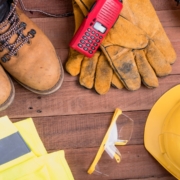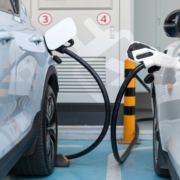Welcome to our latest Member Spotlight, where we shine a light on the individuals making significant impacts in their fields. Today, we’re excited to feature Bridget Quinn, a driving force in the electrical industry and a beacon of mentorship and diversity at the NECA-IBEW Electrical Training Center.
Bridget’s 20-year journey in the electrical trade is marked by her journey-level licenses and role as a dedicated Workforce Development Coordinator. Beyond standard duties, she mentors apprentices and recruits candidates, demonstrating her commitment to diversity and inclusivity. Through collaboration with contractors and educators, Bridget promotes apprenticeships for underrepresented groups, earning her the prestigious Woman of Vision award for her leadership and community impact. This recognition underscores her passion for guiding the next generation of electrical professionals toward success.
Bridget’s mission is clear: to illuminate the path for future electricians through education, empowerment, and advocacy. Join us as we delve into the story of Bridget Quinn, a remarkable individual who is not only shaping the future of the electrical trade but also inspiring others to follow in her footsteps.
How did you get started as an electrician?
Ever since I was a kid, I’ve always learned best by doing things with my hands. After high school, I went to college because that’s what everyone expected me to do. I started studying anthropology but then switched to art school because I really needed to do something creative and hands-on. In high school, we used to have shop classes, but they got rid of them after my first year. So, I ended up taking a lot of art classes because I just had to be making things.
After I finished college, I wasn’t sure what to do next. I tried to find a job where I could work with my hands, but those jobs didn’t pay well, didn’t offer benefits, and didn’t seem to lead anywhere. I felt pretty lost during that time. But then, I met an electrician who changed everything for me. He told me about an apprenticeship program. Meeting him was lucky because it led me to a career where I could use my hands-on skills in a big way.
What got you involved with NECA-IBEW Local 48?
It was a moment of clarity for me when the electrician who first introduced me to the trade posed a question after I obtained my electrical license. He asked if I had fulfilled my dreams, and while I wanted to respond yes, there was a part of me that hesitated. I felt there was more I could do.
“When I joined the electrical industry, I was interested in solar energy and helping the planet that way.”
He said that if I wanted to pursue a career as an electrician, I should join the union. Ironically, he was a nonunion contractor! He drove me down to the union hall by accident instead of the training center. So we walked into the union hall and there were a bunch of guys standing around drinking coffee and playing pool. I felt like every head swiveled, and it made me feel very, very uncomfortable, but, you know, I stuck with it.
What does your role as a Workforce Development Coordinator entail?
When I first started, I didn’t have any real job description. It was basically to help women and people of color join our apprenticeship programs. It was a big learning curve and I had to figure out a plan. I was fortunate to be able to meet with stakeholders and community members and network with them. That was a huge help because I was able to learn a lot more about specific barriers that women and people of color face when trying to join a trade.
“When I started, there was one other woman in my class and very few out on the job site. Now, I walk down the hallways and I hear women’s voices coming out of every corner of the building.”
What kind of changes did you develop and implement?
I started personally reaching out to every single female and BIPOC [Black, Indigenous & People of Color] applicant at every step of the application process. I explained how the process worked and why it was really important to prepare for each step. I shared resources with applicants and insights into the interview process. I let them know that there were groups that could help mentor and support them as well, like Sisters in Solidarity, the Electrical Workers Minority Caucus (EWMC), and RENEW 48.
I also began conducting material handling classes to offer them an advantage. They learned about materials, tools, construction culture, and handling negative situations. Equipped with this knowledge, they could approach contractors confidently.
“In 2011, we had about 12% female enrollment and 12% of our apprentices were BIPOC. Today we’re at 19% women in 27% BIPOC. I think that my role as a Workforce Development Coordinator has played a part in helping increase those numbers.”
I also run our Ambassador 48 program, which is a platform to train our members for career fairs and speaking engagements in classrooms. This allows us to match individuals from our diverse community with schools that share similar diversity and age groups. They can relate more effectively to these younger audiences compared to someone like myself, who graduated from high school many years ago.
Could you share a success story of an apprentice who has thrived under your guidance or mentorship?
We used to hold public orientations every month in our auditorium. This young gal showed up and I think she might have still been in high school. She was a foster kid and already a single mom. She approached me after the orientation and said, “Hey, I just wanted to let you know that when I first got here, I almost left because the auditorium was full of men. But then I saw you walk in and I saw that you were going to lead the session so I decided to stick around.”
And so we kept in touch and I helped her navigate through the application process. It took some time, but seven years later she journeyed out and I’ve watched her raise her son, buy her first house, and have a wonderful life for herself.
When we’re talking about the next generation of electrical professionals, what do you feel they need to succeed?
First off, I’d say passion is key. You’ve got to love what you do because there are days that are going to test you—physically, mentally, and emotionally. It’s those days when your love for moving around, using your hands, and creating something from nothing really matters.
You also need the right skills, especially mechanical ones. Being able to handle tools, stay on your feet all day, work in tight spaces, or reach overhead are all part of the gig. Passion is what keeps you going, but these skills are what get the job done.
Then there’s being prepared. Here at the training center, we’ve got rules and policies you need to stick to—no missing days, no being late. You’ve got to have a reliable way to get here, even if it means dealing with long commutes or starting early.
“Being physically and mentally ready is one thing, but having a strong support network? That’s gold.”
Resilience is another big one. Construction means no two days are the same. You might have to adapt to new schedules, new leaders, or new team dynamics. One day you’re with a crew you click with, and the next, you might not be so lucky. This is where your ability to communicate comes into play, helping you deal with tough colleagues or mentors who aren’t exactly thrilled to teach. Being able to navigate those situations, to get the training and support you need, that’s crucial.
What advice would you give to someone interested in starting a career in the electrical trade, especially those from underrepresented backgrounds?
For those in our industry reading this, remember that you’re always on someone’s radar, whether you realize it or not. The way you present yourself on site, how you talk, and how you act doesn’t just influence our current customers and members—it shapes our future ones too.
I’ll give you an example. Once, while working at the Multnomah Athletic Club, I was up on a ladder and suddenly got the sense that someone was watching me. I looked down to find a little girl with her mother, staring up at me. She asked if I was an electrician, and when I said yes, her reaction was priceless. She thought it was the coolest thing. It just goes to show, you never know who’s looking up to you, literally and figuratively, just by doing your job.
So, take pride in your work and let it show. Your actions might inspire someone’s future decisions. Get involved, too—join the ambassador program or help out with what your local is doing. It’s something to be proud of.
About Bridget Quinn
Journeyman Electrician & Workforce Development Coordinator at NECA-IBEW Electrical Training Center
Connect with Bridget Quinn on LinkedIn.
About the NECA/IBEW Local 48 Partnership
The Oregon-Columbia Chapter of NECA and IBEW Local 48 partnership propels the electrical industry with a focus on integrity, quality, safety, and expertise. Visit our membership page to learn about how to become a member, benefits, and more.

















 rankings when compared to other professions in the U.S. In addition, numerous veterans are drawn to careers in construction due to their mission-driven approach. Sadly, they also confront a heightened risk of suicide, with an
rankings when compared to other professions in the U.S. In addition, numerous veterans are drawn to careers in construction due to their mission-driven approach. Sadly, they also confront a heightened risk of suicide, with an  a supportive environment. Not only will it keep our robust workforce healthy and happy, but it will also ease tensions felt by management, such as retaining a skilled labor pool.
a supportive environment. Not only will it keep our robust workforce healthy and happy, but it will also ease tensions felt by management, such as retaining a skilled labor pool.